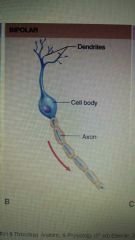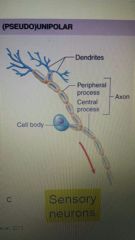![]()
![]()
![]()
Use LEFT and RIGHT arrow keys to navigate between flashcards;
Use UP and DOWN arrow keys to flip the card;
H to show hint;
A reads text to speech;
25 Cards in this Set
- Front
- Back
- 3rd side (hint)
|
Autonomic Nervous System |
Division of the nervous system that regulates and monitors subconscious (involuntary) functions. |
Division of nervous system ... |
|
|
Abduction |
Moving away from the middle of the body. Opposite motion of adduction |
|
|
|
Homeostasis |
Relative constancy of the bodies internal (fluid) environment |
|
|
|
Internal environment |
The Extracellular Fluid or ECF |
|
|
|
ECF |
Extracellular Fluid, The internal environment of the body, liquid found outside of cells, located in 2 compartments; between cells (interstitial fluid) and in blood (plasma) |
|
|
|
Na+ Normal in ECF |
135 -145 mmol/L |
|
|
|
Ca 2+Normal in ECF |
2.1 -2.6 mmol/L |
|
|
|
Glucose Normal in ECF |
Non fasting - 3.5-6 mmol/L Fasting - 3.5-8 mmol/L |
|
|
|
K+Normal in ECF |
3.5-5 mmol/L |
|
|
|
pH level Normal in ECF |
7.35 - 7.45 |
|
|
|
Osmosis |
Movement of a fluid (usually water) through a semipermeable membrane from an area of lesser solute conc to an area of greater conc |
|
|
|
Tonicity |
Potential osmotic pressure |
|
|
|
Somatic Nervous System |
Motor neurons that control voluntary actions of skeletal muscles |
|
|
|
Central nervous system |
The brain and spinal cord |
|
|
|
Peripheral Nervous System |
Nerves connecting brain and spinal cord to other parts of the body |
|
|
|
Somatic Sensory Division |
Divion of the nervous system made up of affarent (incoming) pathways from somatic sensory receptors |
|
|
|
Somatic Motor Division |
Division of the nervous system made up of efferent (outgoing) pathways to somatic effectors (skeletal muscle) |
|
|
|
Visceral Sensory System |
Division of the nervous system made up of affarent (incoming) pathways from autonomic sensory receptors of the internal organs |
|
|
|
Sympathetic Division |
Part of the autonomic nervous system; ganglia are connected to the thoracic and lumbar regions of the spinal cord; fuctions in fight or flight response |
|
|
|
Parasympathetic Division |
Part of the autonomic nervous system; ganglia are connected to the brainstem and the sacral segments of the spinal cord; controls many autonomic effectors under normal (rest and repair) conditions |
|
|
|
Sensory effectors |
Parts of the body that carry oit a somatic response; skeletal muscle |
|
|
|
Autonomic Effectors |
Parts of the body that carry out autonomic nervous system goverened actions; cardiac and smooth muscle, glands |
|
|
|
Multipolar Neuron |

Dendrites lead off of the cell body that altogether has axon leading off of it |
|
|
|
Bipolar Neuron |

Dendrites are separate from the cell body with the axon leading off the cell body |
|
|
|
(Pseudo) Unipolar |

Axon has dendrites at the end of its line and the cell body hanging off the side |
|

